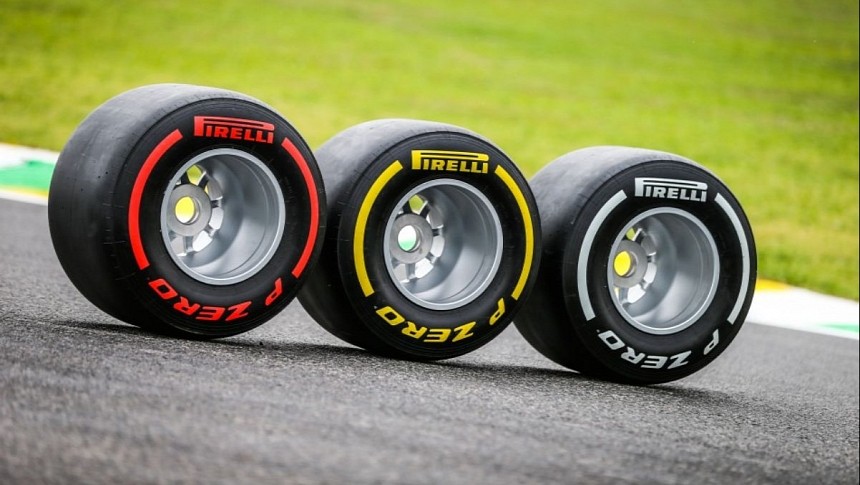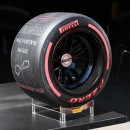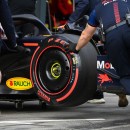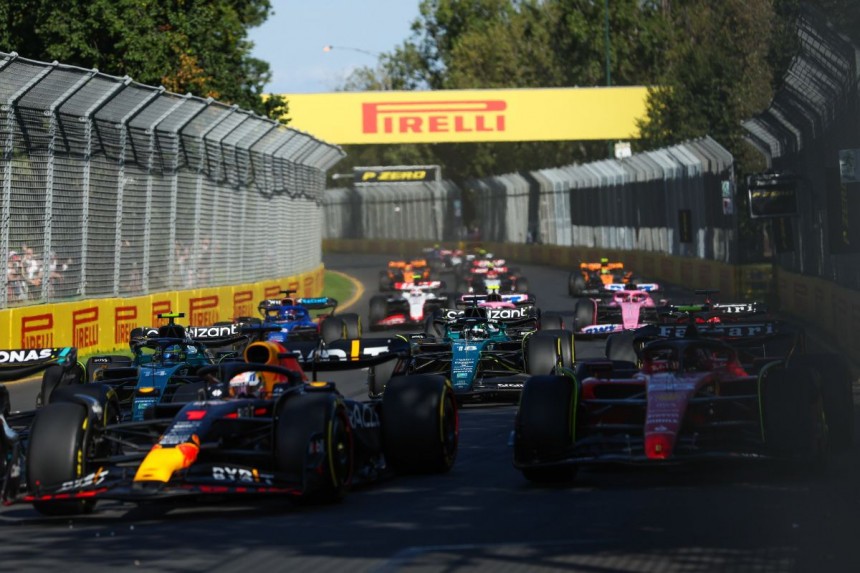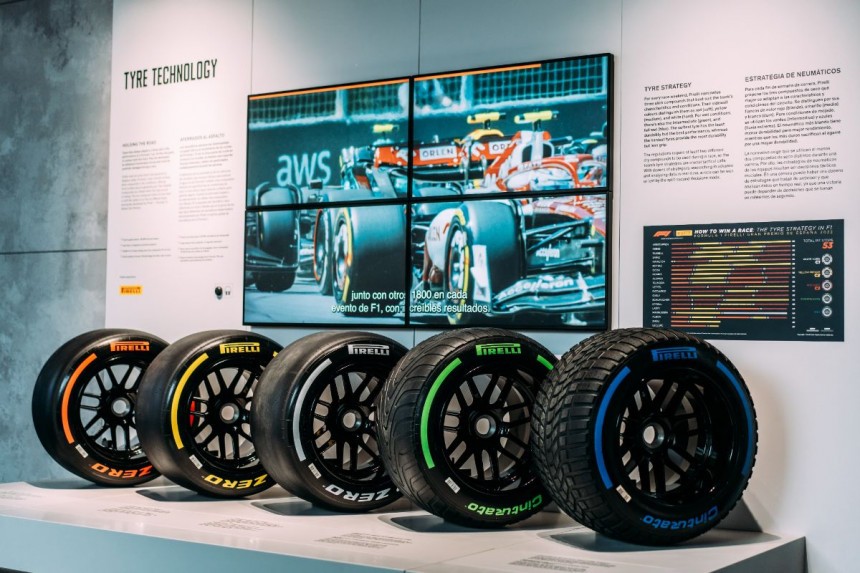Formula 1 cars of today have cemented their status as the swiftest beasts in the annals of this sporting spectacle. Consequently, the endeavor to craft tires capable of withstanding the might of these high-powered machines becomes an arduous undertaking.
With decades of experience in motorsports, specifically in the realm of F1, Italian tire maestro Pirelli procures data from each race and collaborates with F1 teams to ensure their rubber can endure the relentless strains imposed upon it. Yet, the burning question persists: How does Pirelli navigate the complicated process of selecting tire compounds for each upcoming F1 Grand Prix far in advance of the actual event?
Two paths emerge in this realm of tire compound selection for F1: nascent circuits and established locations. When it comes to newborn tracks, encompassing fresh layouts and revamped circuits with recently laid asphalt, Isola and his talented squad rely on the copious simulator data furnished by all ten F1 teams before the season commences. Each group summons its trusty simulator, staffed with its own drivers, and imparts this wealth of data to Pirelli in the spirit of confidentiality.
This treasure trove of information becomes the bedrock for determining the optimal tire compounds for the upcoming race weekend. Historical data from circuits that have hosted past races also plays a pivotal role in the selection process. However, any modifications to the layout or the addition of a fresh coat of asphalt, as witnessed in Miami before this year's race, possess the potential to exert influence upon the tire selection. While the teams retain the autonomy to shape their race strategies, Pirelli bestows upon the spectators a couple of strategies based on average data gleaned from the teams.
As we found ourselves amidst the pulsating atmosphere of the Miami Grand Prix this year, it became evident that specific drivers had opted to commence with the medium compound and transition to the hard tire with a one-stop strategy. However, a torrential downpour on a Saturday night preceding the race served to cleanse the new asphalt and cool down the track, dramatically impacting the race strategy. Under these altered circumstances, embarking with the hard tires and later transitioning to the medium compound would have yielded more significant advantages. When it comes to the already-established circuits, Pirelli leverages historical data to determine the tire compound.
However, the tire manufacturer can effectuate changes up to two weeks before the race weekend. Pirelli has already embarked upon significant maneuvers in anticipation of the ongoing season. The Pirelli officials observed an acceleration in pace across all cars thus far in 2023. In the aftermath of the Miami Grand Prix, Pirelli made a resounding announcement regarding a new specification for slick tires, set to debut at the British Grand Prix in early July, hosted by the iconic Silverstone.
This new specification incorporates tire materials originally intended for 2024, as Pirelli found it imperative to adapt due to the remarkable escalation in car performance—both in terms of velocity and downforce—exceeding preseason simulation data provided by the teams.
In light of the wealth of data amassed from F1 cars, Pirelli has contrived a virtual tire model, harnessing the sensors affixed to the race cars in conjunction with the data streamed from over 115 telemetry channels that course through their veins every race weekend. This invaluable treasure trove of information serves as the crucible for the development of novel tires catering to road cars. While Pirelli has already crafted the Elect EV tire specifically tailored for electric vehicles, the company is actively exploring the integration of enhanced connectivity within their tires, much akin to the existing paradigm in F1 cars.
Pirelli expounded on this notion, highlighting the potential for connected tires to facilitate superior responsiveness in adverse situations, transmitting critical data on grip and the force exerted between the tire and the asphalt. This proactive exchange of information enables the car to anticipate and react effectively to precarious conditions such as icy surfaces or aquaplaning. The McLaren Artura presently reigns as the sole production car boasting this connectivity, yet Pirelli envisions a future where this technology permeates the realm of premium and luxury vehicles.
In the meantime, Pirelli finds itself engulfed in a wave of unprecedented momentum within the North American market. The symbiotic alliance with F1 stands as a cornerstone, contributing significantly to this resounding success. Having re-established its foothold in the realm of F1 in 2011, Pirelli's contract is set to expire in the near future.
However, during the last couple of years, Pirelli did a lot of different experiments with Formula 1 cars during testing in order to improve the grip and the sustainability of tires. Besides F1, those things could be used in the near future in the automotive industry and in other aspects of our day to day life, which is more dependable on vehicles.
Two paths emerge in this realm of tire compound selection for F1: nascent circuits and established locations. When it comes to newborn tracks, encompassing fresh layouts and revamped circuits with recently laid asphalt, Isola and his talented squad rely on the copious simulator data furnished by all ten F1 teams before the season commences. Each group summons its trusty simulator, staffed with its own drivers, and imparts this wealth of data to Pirelli in the spirit of confidentiality.
This treasure trove of information becomes the bedrock for determining the optimal tire compounds for the upcoming race weekend. Historical data from circuits that have hosted past races also plays a pivotal role in the selection process. However, any modifications to the layout or the addition of a fresh coat of asphalt, as witnessed in Miami before this year's race, possess the potential to exert influence upon the tire selection. While the teams retain the autonomy to shape their race strategies, Pirelli bestows upon the spectators a couple of strategies based on average data gleaned from the teams.
As we found ourselves amidst the pulsating atmosphere of the Miami Grand Prix this year, it became evident that specific drivers had opted to commence with the medium compound and transition to the hard tire with a one-stop strategy. However, a torrential downpour on a Saturday night preceding the race served to cleanse the new asphalt and cool down the track, dramatically impacting the race strategy. Under these altered circumstances, embarking with the hard tires and later transitioning to the medium compound would have yielded more significant advantages. When it comes to the already-established circuits, Pirelli leverages historical data to determine the tire compound.
This new specification incorporates tire materials originally intended for 2024, as Pirelli found it imperative to adapt due to the remarkable escalation in car performance—both in terms of velocity and downforce—exceeding preseason simulation data provided by the teams.
In light of the wealth of data amassed from F1 cars, Pirelli has contrived a virtual tire model, harnessing the sensors affixed to the race cars in conjunction with the data streamed from over 115 telemetry channels that course through their veins every race weekend. This invaluable treasure trove of information serves as the crucible for the development of novel tires catering to road cars. While Pirelli has already crafted the Elect EV tire specifically tailored for electric vehicles, the company is actively exploring the integration of enhanced connectivity within their tires, much akin to the existing paradigm in F1 cars.
Pirelli expounded on this notion, highlighting the potential for connected tires to facilitate superior responsiveness in adverse situations, transmitting critical data on grip and the force exerted between the tire and the asphalt. This proactive exchange of information enables the car to anticipate and react effectively to precarious conditions such as icy surfaces or aquaplaning. The McLaren Artura presently reigns as the sole production car boasting this connectivity, yet Pirelli envisions a future where this technology permeates the realm of premium and luxury vehicles.
However, during the last couple of years, Pirelli did a lot of different experiments with Formula 1 cars during testing in order to improve the grip and the sustainability of tires. Besides F1, those things could be used in the near future in the automotive industry and in other aspects of our day to day life, which is more dependable on vehicles.
